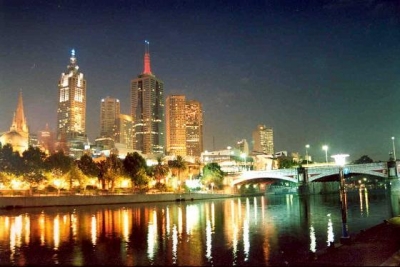You can use Australia Counselling to connect you with Melbourne counsellors and psychologists in your locality. You can search for a counsellor or psychologist in Pahran, Berwick, Highett or Camberwell.
By visiting our Melbourne counselling page and Melbourne CBD inner city counselling, you can search for a counsellor near you. You can easily locate a qualified counsellor helping you with the issues of mental disorders like anxiety, panic, depression and post traumatic stress. You can also get professional advices on personal issues of marriage, relationships and divorce. Those individuals suffering from a state of imbalanced mental state before their wedding can seek help from pre-marital therapist. Also worried patients who are suffering from episodes of low self-esteem and personal growth issues can free themselves from the clutches of complexes by seeking professional help near them.
A History of Melbourne
The Melbourne city centre comprises of the Hoddle Grid and the Queen Victoria Market. Redeveloped areas of south Wharf and Southbank are also a part of it. It is an area in VIC, Australia. This city centre forms the core of Melbourne CBD (Central Business District) in Melbourne’s inner suburbs. It is a part of Melbourne inner city. The boundaries of this area were defined by the Melbourne planning scheme put forward by the Government of Victoria. Melbourne CBD includes important areas namely Crown Casino, Federation Square, Flinders Street Station, Melbourne Aquarium, Melbourne Town hall and National Gallery of Victoria.

The Central Grid pattern of Melbourne is called Hoddle Grid. This was laid down in 1837 and from 1870s to 1920s; it has been a home to most of Melbourne's medical professionals. They set up their practices along Collin's street and Spring Street. In fact before the 1960s, very few permanent residents lived in the vicinity of Spring Street and St. Kilda Road. There were only a handful of apartments in this area because of certain council policies and this area was also unfavoured by residents because of this reason.
Hoddle grid was facing the risk of overdevelopment in the region so some changes were made in order to allow construction in the areas around it. This is the reason why St. Kilda Road was annexed in the 1960s and given a postal code of Melbourne 3004. This move triggered more office development in the vicinity and lead to demolition of many grand mansions.
Things took a turn of events when the Kennett government introduced the Postcode 3000 planning policy. This changed the situation and provided more opportunities for allowing people to reside in the central area. This began the starting point for a process of development in Melbourne inner city.
The centre has now been expanded to include the St. Kilda Road but it still has competition in terms of office space, especially with Southbank and Docklands. The suburban areas that this city competes with for office space are Box Hill, Glen Waverly, Ringwood, Ferntree and South Yarra.
The boundaries of this city are Spencer Street on the West and Spring Street on the East. The northern border is occupied by Grattan Street which also meets Carlton. The western border extends along La Trobe Street, William Street, Peel Street and Grattan Street encompassing Queen Victoria Market, Berkeley Street and Victoria Street. The Eastern border along the Spring Street also extends to include some parts of Wellington Parade, Brunton Avenue, Punt Road and the Yarra River. On the South East side this city borders South Yarra and includes areas of Anderson Street, Domain Road, Domain Street, Fawkner Park, Arnold Street, Commercial Road and High Street. Other places that this city touches at its borders are St. Kilda along St. Kilda Road and Albert Park along Queens Road. This city is also bordered by Lakeside Drive and South Melbourne along Albert's Road. It is also surrounded by Kings Way, Palmerston Cresent, Wells Place and Southbank along the St. Kilda Road. Finally is also surrounded by the south end of the Flinders Street. This area includes Flinders Street Station and Melbourne aquarium.
These borders are demarcated on the official map of this city. But roughly speaking, many adjoining areas can also be included in the Central Activities District. These areas are Melbourne Docklands including the Dockland stadium, Southbank, Victoria and East Melbourne including the Melbourne cricket ground.
Although the area under discussion is described as the Melbourne city centre, it does not hold the attributes to be labelled as the geographic or demographic centre. This is because the South Eastern end of the city is densely occupied by an urban population which unbalances its status as the centre. Bourne Street, Glen Iris should logically form the geographic centre of this city.
Visit our Melbourne counselling page and Melbourne CBD inner city counselling page to search for a counsellor near you.




